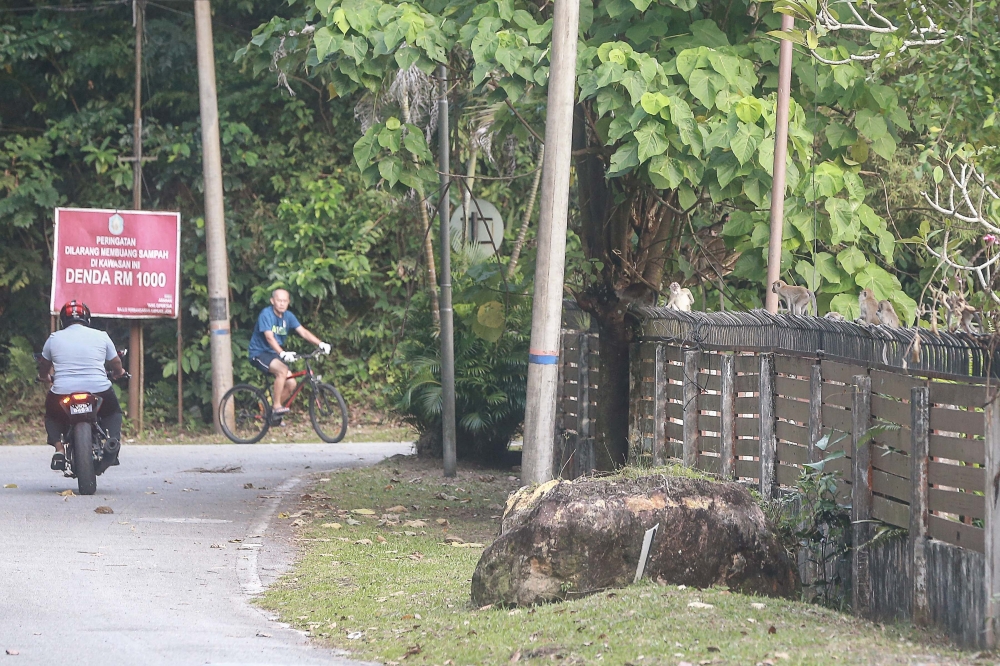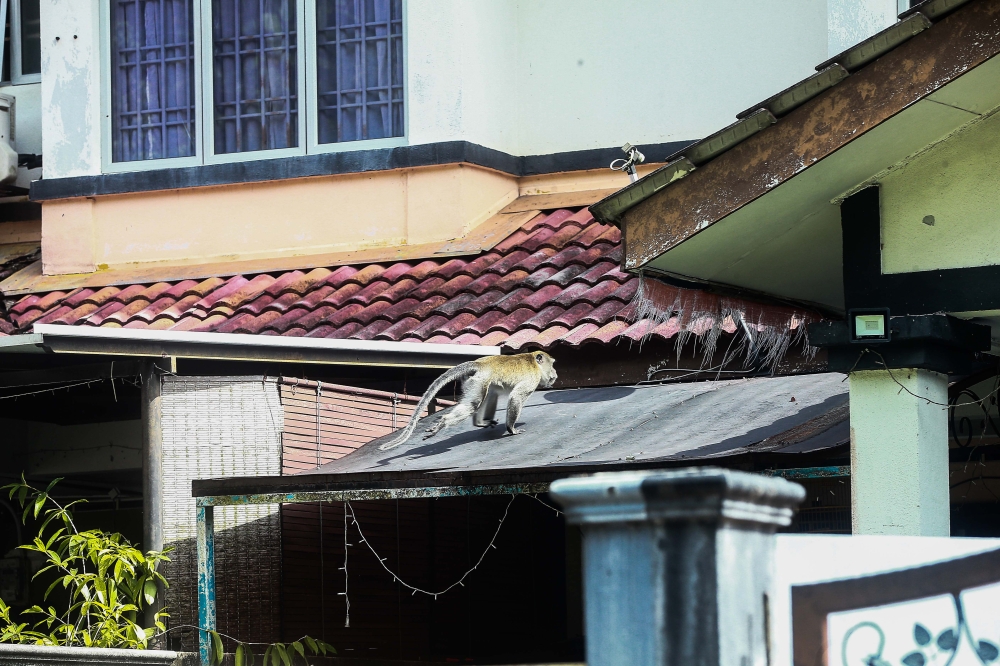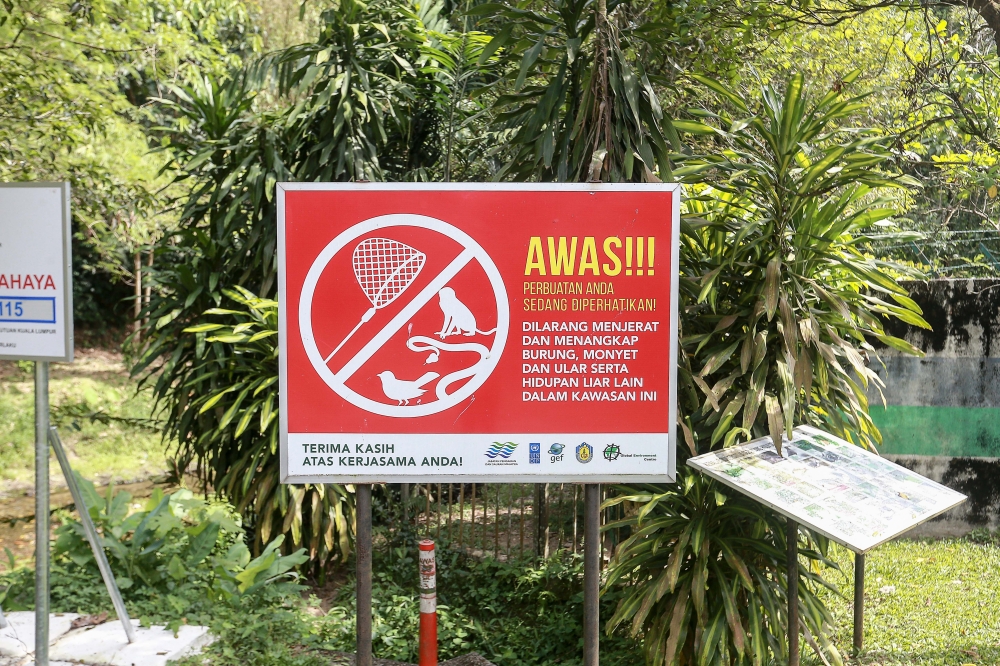KUALA LUMPUR, Feb 15 — The long-tailed macaque, one of 95 primate species found in Malaysia, is a familiar sight to locals, often seen in residential areas, estates, parks, and even airports.
Despite their mischievous reputation, these macaques have been listed as endangered on the International Union for Conservation of Nature (IUCN) Red List since 2022, following a reported 40 per cent global population decline over the past 40 years. If unaddressed, their numbers could drop by at least 50 per cent in the next four decades.
In Malaysia, however, long-tailed macaques are frequently caught in human-wildlife conflict. They face threats ranging from poaching and urban displacement to poisoning by residents frustrated with their presence.
As urban development increasingly encroaches upon forested areas, interactions between humans and wildlife have become inevitable, with some encounters escalating into conflict.

Some macaques seen travelling through residential areas in Taman Melawati in Kuala Lumpur. — Picture by Sayuti Zainudin
Modern day macaques
Associate Professor of Veterinary Behaviour and Animal Welfare at the University of Surrey, Sharmini Julita Paramasivam, who also founded the Animal Neighbours Project (ANP) advocacy group, said macaques’ behavioural patterns have changed due to habitat destruction and evolving diets.
“Macaques often live on forest edges but have increasingly moved closer to residential areas,” she told Malay Mail.
Sharmini noted that while habitat loss is a significant factor, other drivers vary depending on the location, with multiple factors often influencing the monkeys’ behaviour.
Through ANP, Sharmini has been working with Malaysian communities and stakeholders to develop sustainable strategies for human-wildlife coexistence, despite being based in the UK.
“By drivers, I mean what motivates the monkeys to leave their natural habitats and move into residential areas. It could be people feeding them or fruit trees in the area—especially during rambutan season,” she said.
She explained that easy access to high-energy food is a primary motivator for macaques, contributing directly to behavioural changes. These food sources include garbage bins, open dumpsters, and even leftovers from stray animal feeding efforts.
“Feeding them is a huge problem. Not only does it get them accustomed to human food, but it’s also harmful to their health,” she said.

As it’s easier for macaques to find food at residential areas nowadays, it has left them with more ample time on their hands. — Picture by Sayuti Zainudin
Sharmini added that even volunteers feeding stray animals can inadvertently attract monkeys if leftover scraps are not cleaned up.
“Most of the time, people mean well, but they don’t realise they’re contributing to the problem by feeding the monkeys,” she said.
Another issue with high-energy food is its impact on the monkeys’ reproduction. Sharmini explained that such diets accelerate sexual maturity, leading to increased reproduction at a younger age, which can strain areas with already high macaque populations.
“If an area is meant to support 50 animals, that’s the natural carrying capacity. But with excess food, populations can double to 100. Removing access to leftovers and human food would help bring the population back to its natural balance,” she said.
She also noted that urban macaques, with easy access to food, no longer need to travel far, leaving them with ample time to stay inactive or play in residential areas.

In Malaysia, macaques are still often caught in the centre of human-wildlife conflicts, whether it’s being hunted by poachers or being displaced due to urbanisation to getting poisoned by locals for invading their properties. — Picture by Sayuti Zainudin
Dealing with monkeys, humanely
Although the human-macaque conflict persists, violence is not the solution. Malay Mail reached out to several experts for insights on handling the issue more humanely.
World Wide Fund for Nature (WWF) Wildlife Information Network’s senior programme officer Suzika Juiling and Sharmini Julita Paramasivam both suggested using sealed garbage bins to prevent macaques from rummaging through waste. Suzika also advised clearing food scraps and keeping food away from accessible areas like windows, while Sharmini highlighted the effectiveness of monkey-proof garbage bins.
For those with fruit gardens, using guard dogs or geese can help deter monkeys. Adding mesh netting or fences around gardens provides an extra layer of protection from wild animals.
Sharmini also stressed the importance of stopping the practice of feeding and petting wild animals, advocating instead for public education about animal behaviour and characteristics.
Meanwhile, Alliance of River Three (ART) founder Kennedy Michael and Friends of Rivers Malaysia volunteer Mazlan have been cultivating a fruit garden at the edge of Taman Melawati since 2019. The initiative aims to reduce the number of wild animals venturing into residential neighbourhoods.
Michael also emphasised the need for more wildlife crossings in residential areas near forest reserves to prevent roadkills. He urged developers to study the wildlife ecosystem in areas slated for development and create sustainable plans to preserve it.







